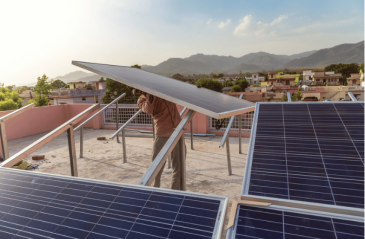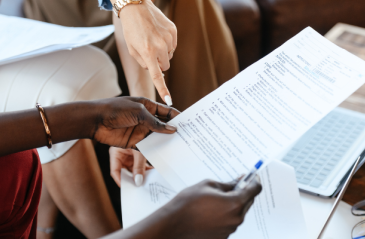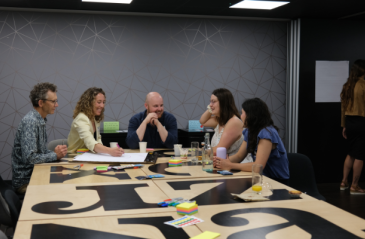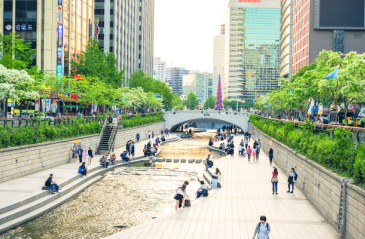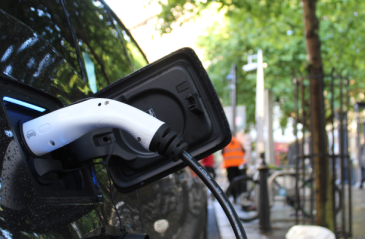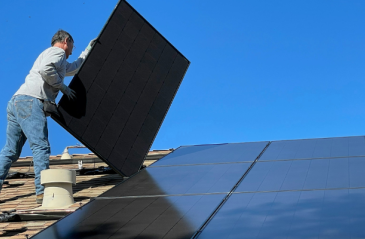
The power of storytelling in climate leadership

COP22 showcased the disparity in the deployment of global funds for climate change
Share articleAlthough it is world’s second largest continent, Africa receives only 5% of all climate funds
Share articleAfrica, adaptation and agriculture are the three forgotten pieces of climate funding
Share articleWe put our vision for government into practice through learning partner projects that align with our values and help reimagine government so that it works for everyone.
Climate change is rarely far from the headlines these days. And, of course, that's a good thing. Notwithstanding the new US president's apparent reluctance to continue the progress made under his predecessor, there is no doubt that today's sceptics are far fewer in number. The science, after all, is overwhelming.
But no-one can say that the work is complete. The planet continues to warm - 2016 was the hottest year on record, a new high for the third year in the row. Sadly, it is clear that recognising climate change is one thing, stabilising global temperatures is quite another. No more so than in Africa - the world's poorest continent, the one least responsible for climate change yet the one most impacted by global warming.
There are two ways to fight climate change - taking action to reduce greenhouse gas emissions (mitigation) or seeking to adapt to its effects. To date, climate negotiations and funding have primarily focused on mitigating high-emitting sectors in developed countries - such as installing underground cabling for utilities or greater use of renewable energy sources. No-one is arguing that such measures aren't important. However, of greater concern is the gap between spending on mitigation and the amount being spent on adaptation.
The UN recommends a "balanced share" of financing between mitigation and adaptation. Today, 94% of global funds go on mitigation and 6% on adaptation. I don't know about you, but this does not fit my definition of "balanced". Until recently, this anomaly remained relatively under the surface - but times are a-changing.
Last November, I had the privilege of participating in the COP22 climate change conference in Marrakesh, Morocco. The event garnered fewer global headlines than COP21 in Paris the year before, where 196 countries adopted the first ever universal and legally binding global climate deal. It was, nonetheless, an important opportunity for governments to showcase how they are seeking to turn the promise of Paris into everyday reality. The event was also important for shining a light on the disparity in the deployment of global funds allocated towards climate change - something which impacts Africa more severely than elsewhere.
Although home to 54 countries and the world's second largest and second most populous continent, Africa receives only 5% of all climate funds and only 4% for agriculture, while only 6% involve adaptation projects - the ones it needs the most and by far its biggest source of jobs. We described it as the "Triple-A" Gap - Africa, adaptation and agriculture, the three forgotten pieces of climate funding. And if you combine them, the scale of the challenge becomes even more acute.
I'm no farmer, but it is clear that agriculture - particularly in Africa - sits front and centre in any attempt to address climate change. It's not just that it represents 20% of global emissions - a fact counterbalanced by soil and forests absorbing carbon dioxide - but for farmers it means something far more personal.
It means the drought that leaves fields fallow and unable to be farmed. It means the heavy downpours that can lead to a massive erosion of nutrient-rich topsoil. And in Africa, where it is the major employer and where food security remains fragile - one person in four is undernourished - it means a disruptive megatrend that is poised to wreak havoc across communities large and small, and is already starting to do so.
The tide is beginning to turn, however. Led by the Moroccan government and backed by a large coalition of African countries, development finance institutions, NGOs and the private sector, Triple-A has taken root in the climate change agenda. So much so that, towards the end of COP22, the then UN secretary-general, Ban Ki-moon, and King Mohammed VI of Morocco made speeches in support of the initiative. The King cited the risks Africa faces, including the 10 million people who have already been turned into climate refugees, and asked other African nations to join Morocco in undertaking large-scale transnational adaptation projects.
The challenge now is to use the visibility created by Triple-A to get the money flowing faster. The agricultural adaptation projects that are most urgently needed - those that address the consequences of rising temperatures for the continent's soil, water and irrigation systems - still aren't seen as good investments by the people who control climate funds. Partly this might be down to cross-border political instability but, equally, African countries also need to design their climate-related agriculture projects in ways that lower the risks and increase the returns.
Adapting Africa's agriculture and building resilience to climate change is no overnight job. The challenges took years to form and are likely to take years to resolve. The progress of recent months, however, suggests that a corner has been turned. It is now up to all of us to ensure that this momentum does not evaporate into thin, global warming-fuelled air.
After all, when it comes to global challenges like climate change, Africa's farmers are hardly the only ones to have a stake in the outcome.


